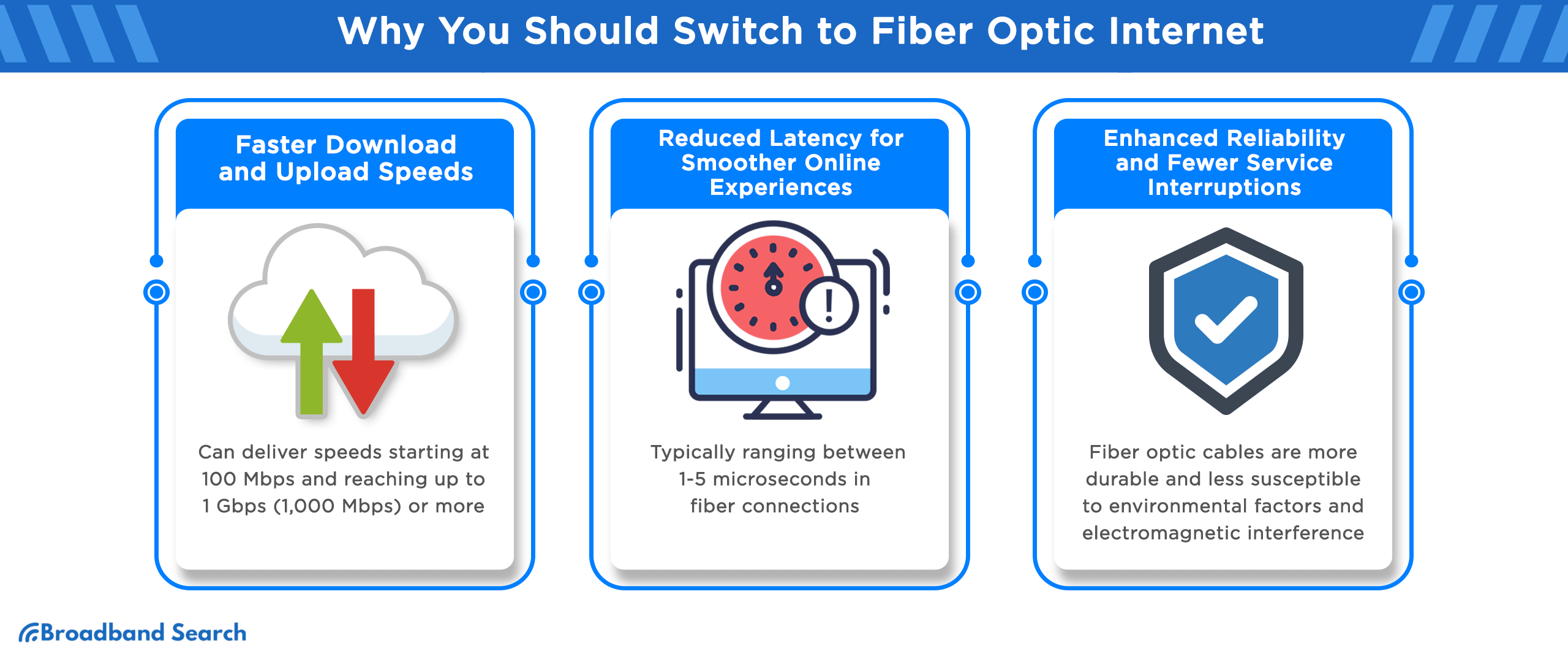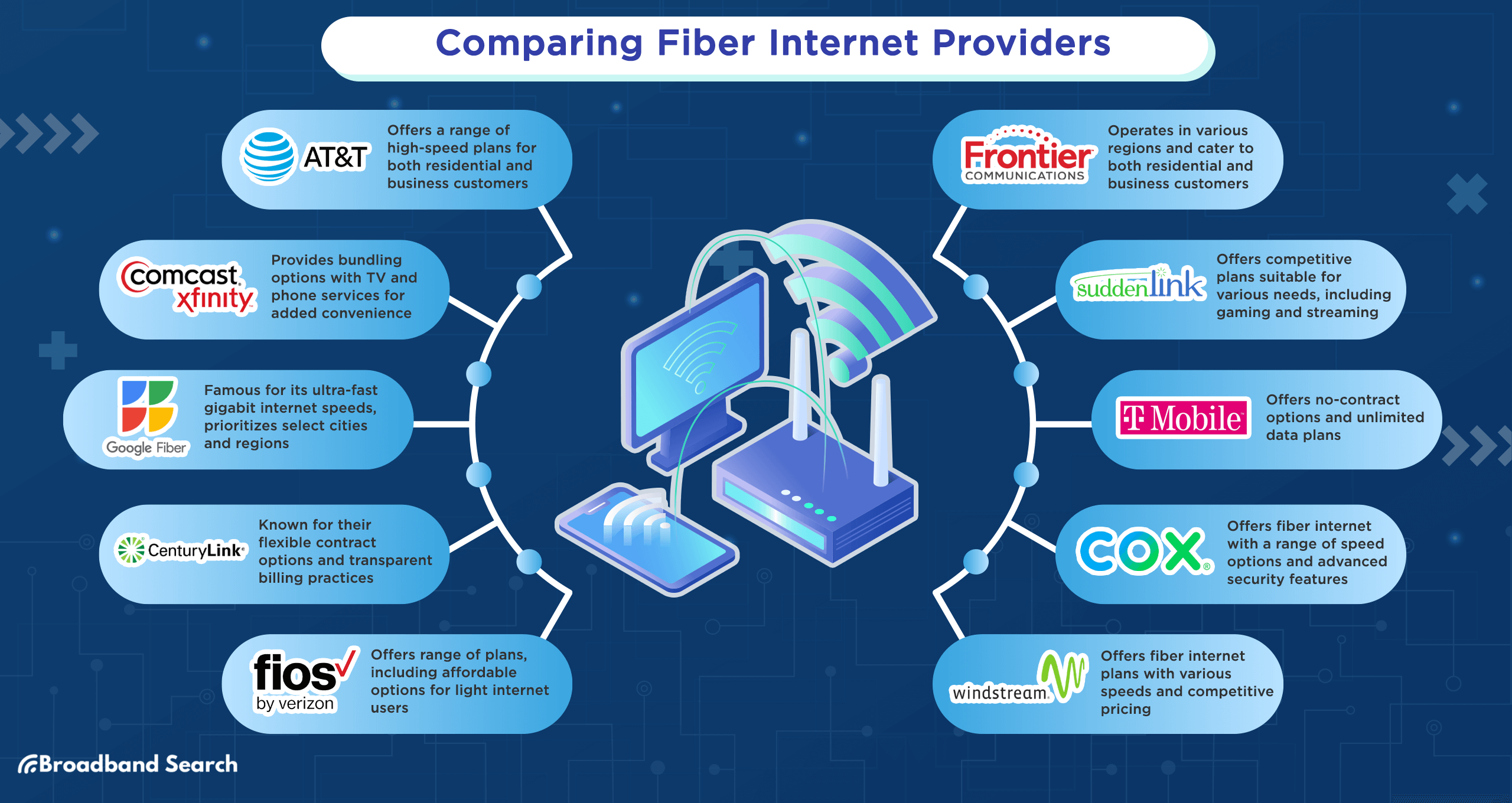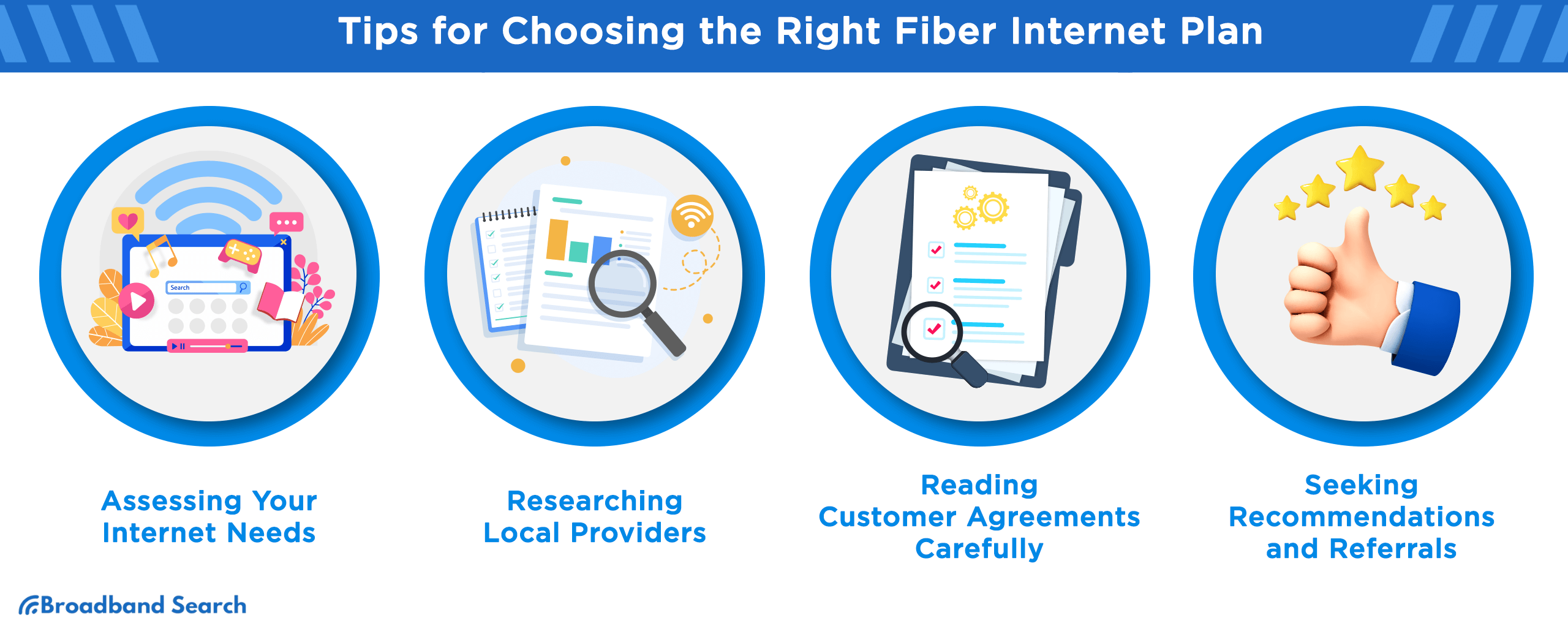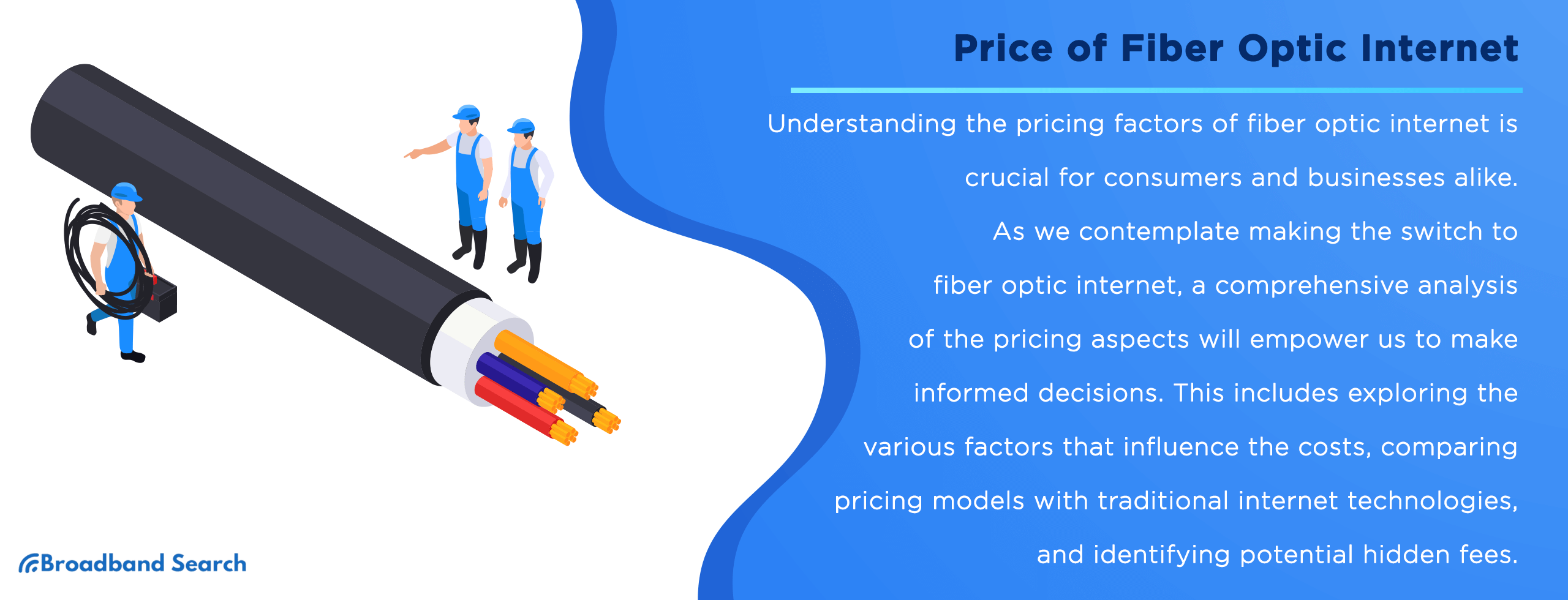The rapid evolution of the digital age has fueled a growing demand for faster and more reliable internet services. As we increasingly rely on the internet for work, education, entertainment, and communication, the need for high-speed connectivity becomes paramount. In response to this demand, fiber optic internet has emerged as a promising solution, offering unparalleled speed, stability, and security.
Understanding the pricing factors of fiber optic internet is crucial for consumers and businesses alike. As we contemplate making the switch to fiber optic internet, a comprehensive analysis of the pricing aspects will empower us to make informed decisions. This includes exploring the various factors that influence the costs, comparing pricing models with traditional internet technologies, and identifying potential hidden fees.
Understanding the Switch to Fiber Internet
Reasons to Switch to Fiber Optic Internet

- Faster Download and Upload Speeds: Fiber optic internet offers significantly faster download and upload speeds compared to traditional internet technologies like DSL and cable. While DSL may provide average download speeds of around 10-25 Mbps and cable around 25-100 Mbps, fiber internet can deliver speeds starting at 100 Mbps and reaching up to 1 Gbps (1,000 Mbps) or more. This dramatic increase in speed enables seamless streaming of high-definition videos, quick file transfers, and swift loading of web pages. You can download large files in seconds, stream 4K videos without buffering, and experience smoother video conferencing for work or virtual meetings.
- Reduced Latency for Smoother Online Experiences: Low latency is a key advantage of fiber optic internet, resulting in minimal delays during data transmission. Latency refers to the time it takes for data to travel from your device to its destination and back. With latency typically ranging between 1-5 microseconds in fiber connections, online activities like online gaming, video calls, and real-time collaboration become remarkably smoother and more responsive compared to traditional technologies with higher latency, such as DSL with around 11-40 ms or cable with around 13-27 ms latency. In online gaming, low latency is crucial for quick reactions and precise gameplay, while in video calls and virtual meetings, it ensures fluid and natural conversations. The reduced latency in fiber internet guarantees a seamless and lag-free experience in various online interactions.
- Enhanced Reliability and Fewer Service Interruptions: Fiber optic cables are more durable and less susceptible to environmental factors and electromagnetic interference compared to traditional copper cables used in DSL and cable internet. This increased resilience leads to a more reliable internet connection with fewer service interruptions and reduced downtime. Fiber internet connections experience minimal signal loss and are not affected by factors like weather conditions or electrical interference, ensuring consistent and uninterrupted connectivity for your online needs. This reliability is especially crucial for businesses that rely on a stable internet connection for their operations and for users who depend on constant connectivity for work, entertainment, and communication.
Cost Savings and Long-Term Benefits
Evaluating the Total Cost of Ownership for Fiber Internet: While the initial investment for fiber optic internet deployment may be higher compared to other technologies, evaluating the total cost of ownership (TCO) over time reveals significant long-term cost savings. Fiber's efficiency and reliability lead to reduced maintenance and support costs for both providers and users. Fiber internet requires less frequent repairs and replacements due to its durability, saving on operational expenses. Additionally, fiber's ability to transmit large amounts of data quickly can improve the efficiency of various services, such as cloud-based applications, reducing the need for costly hardware upgrades. In the long run, the total cost of ownership for fiber internet proves to be more economical, making it a wise investment for both individuals and businesses.
Potential Savings in the Long Run Due to Improved Efficiency: Fiber optic internet's higher speeds and reliability can significantly boost efficiency in residential settings. Faster data transfer and seamless online experiences lead to streamlined tasks and improved productivity. For households, tasks such as online shopping, video streaming, and downloading large files are completed more quickly, saving valuable time and reducing frustration. With fiber internet, you can optimize your online experience, accessing information and services with ease, which can lead to enhanced convenience and enjoyment. Lastly, fiber's reliability ensures consistent connectivity, reducing the need for costly data overage fees and eliminating potential productivity losses due to internet outages.
Impact on Business and Work from Home
How Fiber Internet Benefits Businesses and Remote Workers
Fiber optic internet can transform the way businesses operate, enabling faster data transfers, seamless video conferencing, and improved collaboration among teams. With the ability to upload and download large files quickly, businesses can enhance their productivity and communication with clients, partners, and employees. For remote workers, fiber internet ensures consistent connectivity and better performance for virtual meetings, file sharing, and cloud-based applications. This creates a productive and connected work environment, regardless of employees' location.
Increased Productivity and Competitiveness
With fiber internet, businesses can enhance productivity by reducing the time spent on data transfers and online tasks. Tasks that previously took minutes on traditional internet connections can be completed in seconds on fiber. This increased efficiency translates into a competitive advantage, allowing businesses to respond faster to market demands and customer needs. Companies that rely on smooth video conferencing, large data transfers, or cloud-based services can outperform their competitors by delivering high-quality services and products more efficiently.
Community Benefits
Advantages of Fiber Optic Internet for Schools, Healthcare, and Public Services
Fiber optic internet plays a crucial role in improving essential community services. In schools, it enables better access to online educational resources, enhances virtual learning experiences, and supports distance learning programs. Fiber internet's speed and reliability ensure that students and educators can access information and collaborate seamlessly, leading to a more effective and engaging learning environment.
In healthcare, fiber enables faster data transfer for medical records and telemedicine applications, improving patient care and outcomes. Healthcare professionals can access patient data more quickly and efficiently, leading to better diagnoses and treatments. For public services, fiber internet enhances communication and data-sharing capabilities among government agencies, leading to more effective and responsive governance. It enables seamless communication between different departments, facilitating better coordination in public safety, emergency response, and citizen services.
Improved Quality of Life for Residents
In communities with access to fiber optic internet, residents experience a significant improvement in their daily lives. High-speed internet facilitates a wide range of benefits, making entertainment options more enjoyable. Streaming high-definition videos and engaging in online gaming become seamless experiences without buffering or lag, providing endless entertainment possibilities. Online shopping becomes quicker and more convenient, allowing residents to browse and make purchases with ease.
Moreover, the increased reliability and reduced downtime of fiber optic internet ensure that residents can stay connected with loved ones, friends, and colleagues at all times. Whether for video calls, social media interactions, or virtual meetings, the consistent connectivity enhances communication and fosters meaningful connections.
Factors Influencing the Price of Fiber Optic Internet
Infrastructure and Installation Costs
Fiber optic internet requires a substantial initial investment in infrastructure and installation. The setup process involves several steps, including:
- Fiber Optic Cable Deployment: The cost of laying down fiber optic cables, which involves digging trenches or stringing cables on utility poles, can be significant, especially in areas with existing infrastructure.
- Equipment Installation: Setting up the necessary equipment, such as optical line terminals (OLTs) and optical network units (ONUs), at both ends of the fiber connection incurs additional expenses.
- Network Design and Planning: The process of designing and planning the fiber optic network to ensure optimal performance and coverage also contributes to overall costs.
Geographic Coverage and Availability
The Impact of Location on Fiber Optic Availability
The availability of fiber optic internet is influenced by geographical factors. Fiber optic networks are commonly deployed in densely populated urban areas with higher demand and potential return on investment. As a result, rural or sparsely populated regions might have limited access to fiber internet due to the higher costs and lower customer density.
Rural vs. Urban Areas and Their Access to Fiber Internet
In urban areas, the concentration of businesses and households makes it more economically feasible for fiber internet providers to deploy and maintain fiber optic infrastructure. This translates to faster and more widespread availability of fiber optic services in cities and densely populated regions. Urban areas enjoy the benefits of high-speed and reliable internet connectivity, with multiple providers vying to offer competitive pricing and plans.
On the other hand, rural areas often face higher installation costs and lower potential customer numbers. The sparse population and long distances between properties increase the expenses associated with laying fiber optic cables. As a result, the rollout of fiber optic services in rural areas might be slower compared to urban counterparts. The limited availability of providers and the higher costs associated with installation can also lead to potentially higher prices for those who can access fiber internet in rural regions.
For a detailed guide on how fiber internet is installed, you can refer to our comprehensive installation guide, which provides step-by-step instructions and insights into the installation process.
Internet Speed Tiers
Fiber optic internet providers offer different speed tiers to cater to varying customer needs. Common speed options include:
- Basic Plans (e.g., 100 Mbps): Suitable for light internet usage, such as web browsing and email.
- Standard Plans (e.g., 500 Mbps): Ideal for streaming, online gaming, and moderate file downloads.
- Gigabit Plans (e.g., 1 Gbps and beyond): Geared towards heavy internet users, multiple devices, and data-intensive applications.
Bundled Services
Availability of Bundled Plans (Internet, TV, Phone): Many fiber optic internet providers offer bundled plans that include additional services such as television and phone services. These bundles can provide convenience and cost savings for customers who require multiple services from the same provider.
Potential Cost Savings with Bundled Offerings: Bundled plans often come with discounted rates compared to purchasing individual services from different providers. Subscribing to a bundle can lead to significant cost savings, making it an attractive option for consumers seeking multiple services while consolidating their bills.
Comparing Fiber Internet Providers

AT&T Internet: A leading national provider with widespread fiber coverage, offering a range of high-speed plans for both residential and business customers. They are known for their reliable connectivity and excellent customer service.
Comcast Xfinity: Another major national provider, Comcast Xfinity, offers a wide variety of fiber internet plans with different speed options. They also provide bundling options with TV and phone services for added convenience.
Google Fiber: Renowned for its ultra-fast gigabit internet speeds, Google Fiber focuses on select cities and regions. Their service is known for its reliability and straightforward pricing.
CenturyLink: Serving both urban and rural areas, CenturyLink offers competitive fiber internet plans with symmetrical speeds. They are known for their flexible contract options and transparent billing practices.
Verizon Fios: With an extensive fiber network, Verizon Fios provides high-speed internet with exceptional performance. They offer a range of plans, including affordable options for light internet users.
Frontier Communications: Operating in various regions, Frontier Communications offers reliable fiber internet service with multiple speed tiers. They cater to both residential and business customers.
Suddenlink: Suddenlink delivers fast and reliable fiber internet primarily in certain regions. They offer competitive plans suitable for various needs, including gaming and streaming.
T-Mobile Home Internet: T-Mobile Home Internet provides high-speed fiber internet with a focus on reaching underserved rural areas. They offer no-contract options and unlimited data plans.
Cox Communications: Operating in several states, Cox Communications offers fiber internet with a range of speed options and advanced security features.
Windstream: Windstream is a regional provider with a growing fiber network, offering fiber internet plans with various speeds and competitive pricing.
Regional vs. National Fiber Providers and Their Service Areas
When it comes to fiber optic internet providers, there are significant differences between regional and national companies. Each type of provider offers unique advantages and considerations for consumers.
Regional Providers
Regional fiber internet providers, as exemplified by Google Fiber and Windstream, focus on specific cities, states, or smaller geographic areas. They tailor their services to meet the needs of these localized communities, offering targeted solutions and personalized customer support. Their primary advantage lies in their strong emphasis on local presence and engagement, which often translates to more attentive and responsive customer service. Regional providers may have a deeper understanding of the unique challenges and demands of the areas they serve, leading to tailored plans and offerings.
Speeds and Services: Regional providers typically offer competitive speeds that are comparable to national providers. While their coverage areas might be limited compared to national companies, their focus on localized service can result in higher customer satisfaction and a more community-oriented approach.
Cost and Pricing: The cost of fiber internet plans offered by regional providers can vary depending on the specific area and the extent of their infrastructure. While their pricing might be competitive, some regions may experience slightly higher costs due to localized infrastructure and smaller customer bases.
National Providers
On the other hand, national fiber internet providers like AT&T Internet, Comcast Xfinity, and Verizon Fios have a widespread presence, offering extensive coverage across multiple states and regions. They have the resources and infrastructure to serve millions of customers throughout the country. National providers often provide standardized plans and packages, ensuring consistency in service offerings regardless of the location.
Speeds and Services: National providers tend to offer a range of fiber internet speed tiers, catering to different customer needs and preferences. Their nationwide presence enables them to offer a wide array of services, including bundled plans with TV and phone services, providing customers with comprehensive and convenient packages.
Cost and Pricing: The pricing of fiber internet plans from national providers can be competitive due to their economies of scale and widespread infrastructure. The standardized plans may appeal to customers seeking consistency and simplicity in their internet services.
Service Plans and Pricing
Comparison of Pricing Structures for Different Providers: Providers vary in their pricing models, with some offering tiered plans based on internet speed and others providing flat-rate options. Comparing pricing structures allows consumers to find the best balance between speed and affordability.
Understanding Contract Terms and Hidden Fees: It's essential to carefully review contract terms and potential hidden fees before committing to a fiber internet plan. Some providers may have data caps, early termination fees, or additional charges for equipment rental that could impact the overall cost.
Customer Satisfaction and Reviews
- Analyzing Customer Feedback and Ratings: Reading customer reviews and ratings provides valuable insights into the overall satisfaction levels of current users with a specific fiber internet provider.
- Identifying Reliable and Reputable Providers: Providers with consistently positive customer feedback and a strong reputation for reliable service and customer support are likely to deliver a positive experience for new subscribers.
Value-Added Services
- Additional Services Offered by Providers: Many providers offer value-added services like 24/7 customer support, cybersecurity features, and online storage to enhance the overall internet experience.
- Evaluating the Value of Bundled Services and Promotional Offers: Customers can assess the benefits and cost savings of bundled plans that combine internet, TV, and phone services, as well as any ongoing promotional offers.
Tips for Choosing the Right Fiber Internet Plan

Assessing Your Internet Needs
Identifying Bandwidth Requirements for Your Household or Business: To choose the right fiber internet plan, assess your internet needs based on the number of users and devices in your household or business. Consider activities like streaming, gaming, and video conferencing, which require higher speeds, and select a plan that meets your specific bandwidth requirements.
Considering Future Scalability Needs: Anticipate future growth in internet usage and technological advancements. Opt for a fiber internet plan that offers scalability to accommodate increasing demands without the need for frequent plan upgrades.
Researching Local Providers
Exploring Local and Regional Fiber Internet Options: Look beyond national providers and explore local and regional fiber internet options. Local providers may offer more personalized services and better coverage in certain areas, providing tailored solutions that align with your needs.
Checking Coverage Maps and Availability in Your Area: Use coverage maps provided by fiber internet providers to determine if their service is available in your location. Confirming coverage helps avoid disappointment and ensures you choose a provider that caters to your area.
Reading Customer Agreements Carefully
Understanding Contract Terms, Data Caps, and Penalties: Thoroughly review the customer agreement before committing to a fiber internet plan. Understand contract duration, potential early termination fees, and any data caps imposed by the provider to avoid unexpected costs.
Clarifying Any Questions with the Provider's Customer Support: If you have doubts or questions about the terms of the agreement, contact the provider's customer support for clarification. Ensure you are fully informed before finalizing your decision.
Seeking Recommendations and Referrals
Seeking Advice from Friends, Family, or Online Communities: Gather recommendations from friends, family, or online communities regarding their experiences with different fiber internet providers. Real user advice can provide valuable insights to help you make an informed decision.
Learning from Other Users' Experiences to Make an Informed Decision: Utilize online reviews and testimonials from existing customers to understand the quality of service, reliability, and customer support offered by potential providers. Learning from others' experiences can aid in choosing the right fit for your needs.
The BottomLine
Fiber optic internet offers numerous advantages that cater to our increasing demand for faster and more reliable online connectivity. With unparalleled speed, reduced latency, and enhanced stability, fiber internet transforms our digital experiences, making streaming, gaming, and virtual interactions seamless and enjoyable.
When choosing a fiber internet plan, it is vital to consider all factors carefully. Assess your specific internet needs, including bandwidth requirements and future scalability, to find a plan that aligns perfectly with your usage patterns. Research local providers, read customer agreements diligently, and seek recommendations from trusted sources to ensure a seamless and satisfying internet experience.
Embrace the switch to fiber optic internet to unlock the full potential of the digital world. Say goodbye to buffering and lag, and say hello to a future-proof investment that propels you into a world of endless possibilities. Make the move today and enjoy a better, faster, and more reliable online experience with fiber optic internet.
FAQ
What are the benefits of fiber optic internet?
Fiber optic internet offers numerous advantages, including blazing-fast download and upload speeds, reduced latency for smoother online experiences, and exceptional reliability with fewer service interruptions. It provides seamless streaming, online gaming, and enhanced connectivity, making it ideal for work and communication.
Why is it important to consider all factors when choosing a fiber internet plan?
Considering all factors ensures that you select the most suitable fiber internet plan that meets your specific needs and requirements. Assessing bandwidth needs, researching local providers, and reading customer agreements help you make an informed decision and avoid unexpected costs or limitations.
How does fiber optic internet compare to other internet technologies like DSL and cable?
Fiber optic internet outperforms traditional technologies like DSL and cable in terms of speed, reliability, and symmetrical upload and download speeds. It provides faster, more consistent connections, making it a superior choice for a better online experience.
Is fiber internet cost-effective in the long run?
While the initial installation cost of fiber internet may be higher, evaluating the total cost of ownership over time reveals potential cost savings. Fiber's low maintenance and reduced downtime lead to fewer repair expenses, making it a cost-effective option in the long run.
How can I get started with fiber optic internet?
To get started with fiber optic internet, research and compare available plans from different providers in your area. Assess your internet needs, consider future scalability, and read customer agreements carefully before making your decision. Embrace the switch to fiber optic internet to enjoy a better online experience with faster speeds and reliable connectivity. Contact your chosen fiber internet provider to initiate the installation process and welcome the future of connectivity into your home or business!

